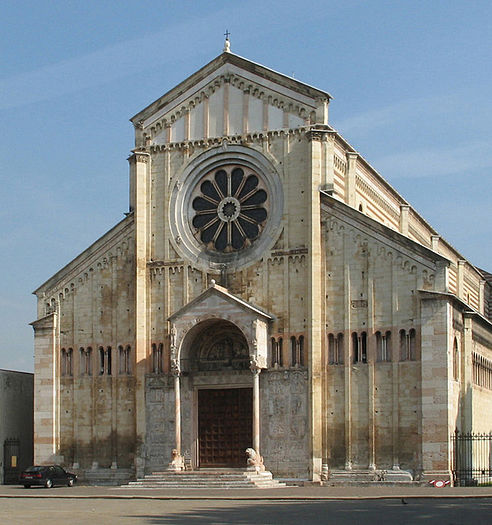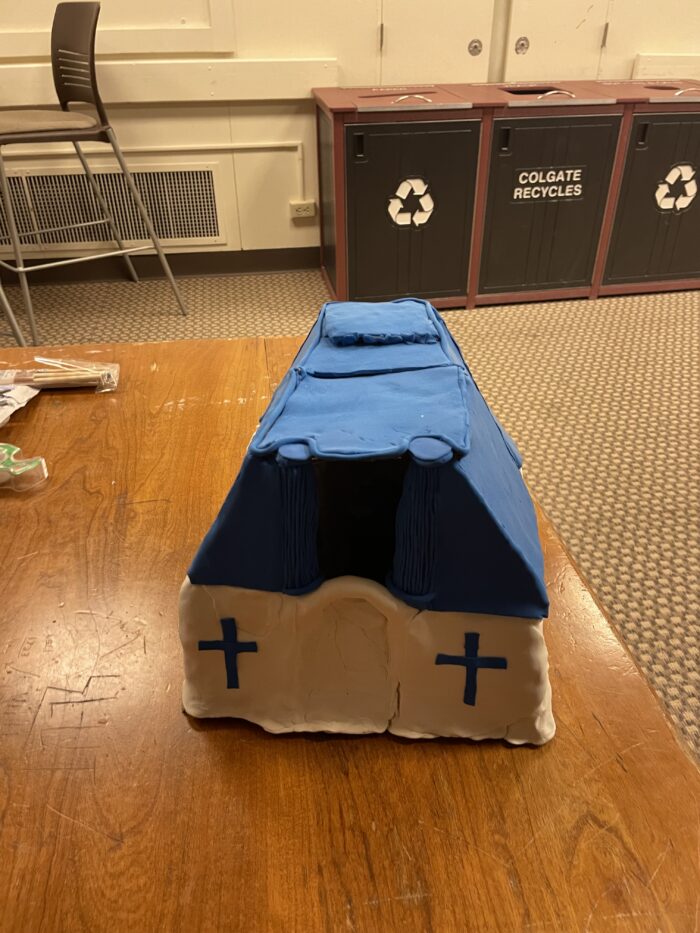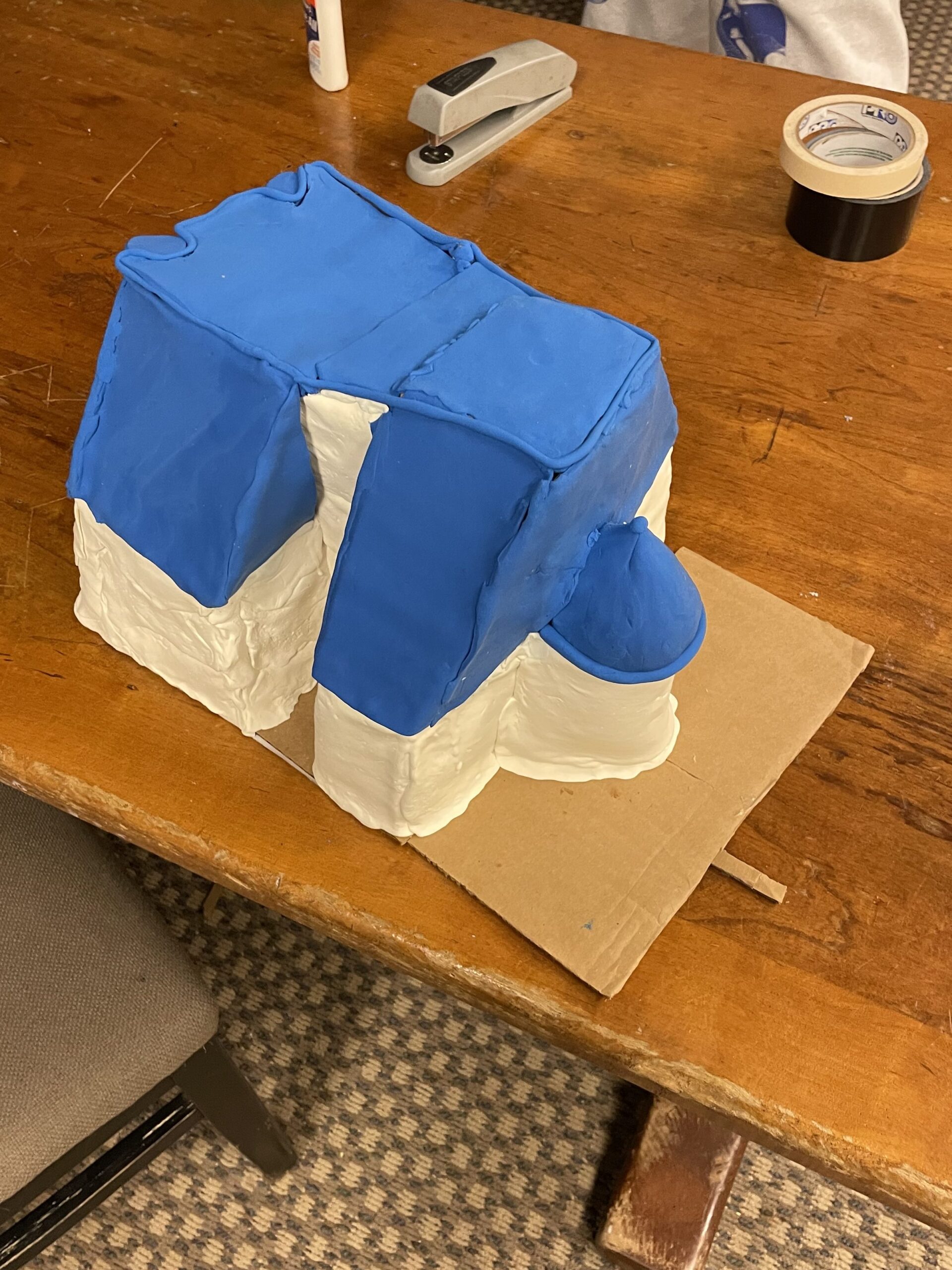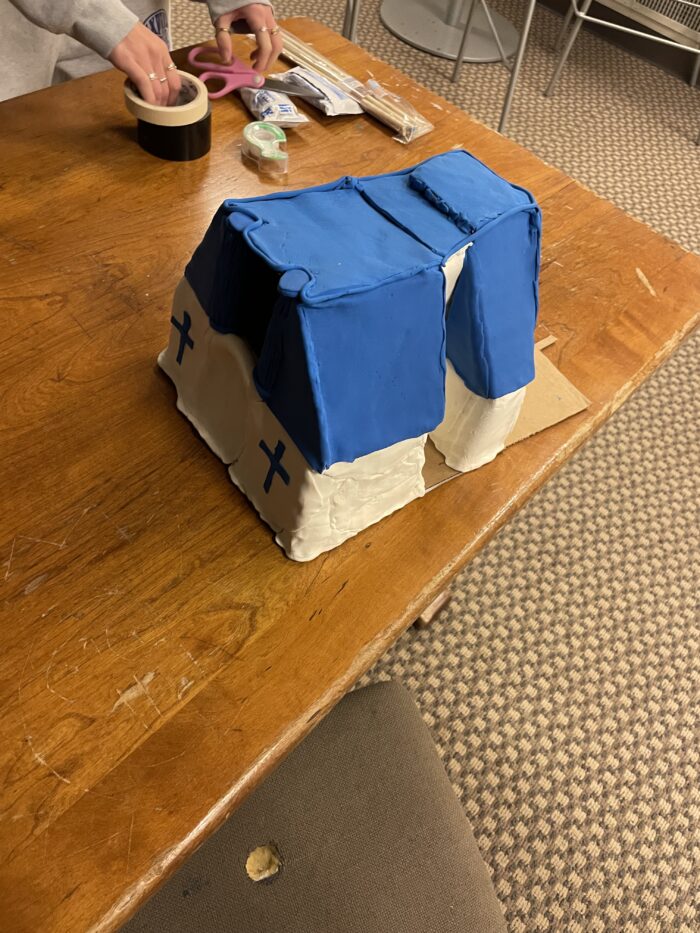Our Original Building Plan
Originally for our final project, Bernie and Kate planned on building a Romanesque cathedral and a Gothic cathedral and comparing and contrasting the structural differences. We hoped to research the two, learning from our research to accurately depict what we felt the two cathedrals would look like. It was apparent that the Romanesque cathedral would be less complicated and easier to build than the daunting Gothic cathedral. Romanesque cathedrals have rounded arches, large buttresses, and little to no windows. On the other hand, Gothic cathedrals have pointed arches, tall supporting pillars, thin buttresses, and elaborate windows. Though it took around a hundred years for architects to graduate from Romanesque cathedrals to Gothic, we were hopeful that we would be able to construct both (with zero architecture experience).

Our Actual Building Plan
As we began planning out the precise architectural layout of both cathedrals, we soon realized that it would be much more labor and cost intensive than we originally imagined. Beginning with the Romanesque cathedral, we started the construction with a cardboard cross-like cutout for the base. We determined that this would be the shape of our base as we recognized all layouts of Romanesque cathedrals to be that of a cross. We then proceeded to glue dowels onto the cardboard to help stabilize our future building, much like the short pillars in Romanesque cathedrals. The foundation of our cathedral had all of the essential elements: nave, rounded arches, an apse (this aspect along with the radiating chapels was a bit difficult to execute at the size we were working with, but we were able to pull off the general structure).

How Did We Do?
We then began to use our recently bought Model Magic clay to make the walls of our now laid out cathedral. We made a rounded arch on the front to represent the rounded arches that were used in Romanesque Cathedral, soon recognizing that without the buttresses the rounded arch did in fact push outwardly on our creation (tilting our walls and pillars, something that may have not occurred with a pointed arch). After we installed all our walls, we moved onto laying the roof of our Cathedral. With the labor intensiveness of our walls we realized that the roof would need to be supported than more than just the walls themselves. Out of fear for our project, and the betterment of our creation, we cut out cardboard to lay our roof on. Rolling out thin layers of blue clay, we finalized our Cathedral with a blue dome and bountiful blue roof. We patched holes and added decorations, finalizing our Romanesque creation.

What We Learned
After taking two days to build, and more money than we hoped, we realized that our ambitions were set too high and recognized that our architectural skills, and perhaps the material itself, were not strong enough to build a Gothic cathedral. Our respect for the hundred or so years it took for the progression from Romanesque cathedrals to Gothic cathedrals was greatly heightened by the end of our laborious project. Obviously the scale of production was very different, but this project really emphasized the efforts and precision it must have taken to construct such cathedrals with minimal technology.
Videos and Photos


Byline
We are Kate Rubich and Bernard McGuire. When we were tasked with this final we really wanted to hone in on the creativeness of the assignment. We thought that our understanding and respect for our teachings about Romanesque and Gothic cathedrals could only be increased if we undertook this ambitious task. Though it isn’t the most beautiful cathedral in the world, we are very pleased with how it turned out.
